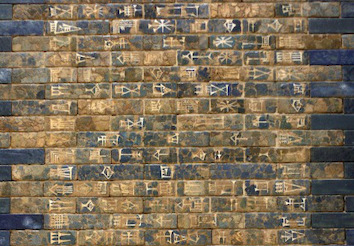Neo-Babylonian Empire (625–539 BC)

Major building activities are known for most of the kings of the Neo-Babylonian Empire (625–539 BC), the principal temporal focus of BTMAo. Click on the links below or in the left-hand menu to access information about these kings' building activities.
- Nabopolassar (r. 625–605 BC)
- Nebuchadnezzar II (r. 604–562 BC)
- Amēl-Marduk (r. 561–560 BC)
- Neriglissar (r. 559–556 BC)
- Lâbâši-Marduk (r. 556 BC)
- Nabonidus (r. 555–539 BC)
Note that Lâbâši-Marduk, Neriglissar's young and inexperienced son and immediate successor, was not in power long enough for him to have had any major building activities carried out. Therefore, no informational page is provided for this very short-reigned king of Babylon.
Jamie Novotny
Jamie Novotny, 'Neo-Babylonian Empire (625–539 BC)', Babylonian Temples and Monumental Architecture online (BTMAo), The BTMAo Project, a sub-project of MOCCI, [http://oracc.org/btmao/StructuresbyBuilder/Neo-BabylonianEmpire/]